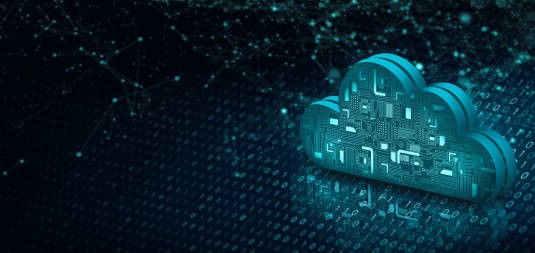Cloud computing has rapidly transformed the way individuals and businesses manage data, applications, and IT resources. If you’re new to this technological marvel, fear not! This complete guide is designed to demystify cloud computing, break down its concepts, and provide you with a solid foundation to navigate this digital realm with confidence.
What is Cloud Computing?
At its core, cloud computing refers to the delivery of computing services—including storage, processing, networking, and more—over the Internet. Rather than relying on local servers or personal computers to handle these tasks, cloud computing leverages vast data centers owned by service providers. Users access these services via the internet, paying for what they use, like electricity or water.
Do you have a software/mobile development project in mind? Contact us today and let us help you turn your idea into reality. We have the skills, experience, and passion to create amazing solutions for your business needs. Email us at sales@nesesho.com
Want to know more about our Tech Solutions? Visit us at www.nesesho.com
Key Concepts to Grasp
1. Service Models:
Cloud computing offers three primary service models:
Infrastructure as a Service (IaaS): Provides virtualized computing resources over the internet, such as virtual machines, storage, and networking. Users can manage their software, but the underlying infrastructure is maintained by the provider.
Platform as a Service (PaaS): Offers a platform and environment for developers to build, deploy, and manage applications. This model abstracts the underlying infrastructure, focusing on code and application logic.
Software as a Service (SaaS): Delivers fully functional software applications over the internet, eliminating the need for users to worry about hardware, software maintenance, or upgrades. Popular examples include Gmail and Salesforce.
2. Deployment Models:
Cloud computing can be deployed in various ways:
Public Cloud: Services are offered by third-party providers over the internet and are available to anyone willing to use them. Examples include Amazon Web Services (AWS), Microsoft Azure, and Google Cloud Platform (GCP).
Private Cloud: Resources are provisioned for exclusive use by a single organization. It offers greater control, security, and customization but can be more expensive to set up and maintain.
Hybrid Cloud: Combines both public and private cloud models, allowing data and applications to be shared between them. This flexibility is advantageous for businesses with dynamic workloads.
3. Cloud Benefits:
Understanding the advantages of cloud computing is essential:
Cost-Efficiency: Pay only for the resources you use, avoiding hefty upfront infrastructure costs.
Scalability: Easily scale up or down based on demand, ensuring resources match your needs.
Flexibility: Access services from anywhere with an internet connection, fostering remote work and collaboration.
Reliability: Cloud providers offer robust infrastructure with redundancy and data backups, reducing the risk of data loss.
Practical Applications
Cloud computing finds applications in various domains:
1. Business Operations:
Cloud-based solutions facilitate core business functions, from customer relationship management (CRM) to enterprise resource planning (ERP). They streamline processes, enhance collaboration, and offer valuable insights through data analytics.
2. Development and Testing:
Developers can swiftly provision resources in the cloud for coding, testing, and deploying applications. This agility accelerates development cycles and reduces costs.
3. Data Storage and Backup:
Cloud storage provides a secure and cost-effective means of storing and backing up data. Services like Amazon S3 and Google Cloud Storage offer scalability and redundancy.
4. AI and Machine Learning:
Cloud platforms offer tools and frameworks for AI and ML development, making it accessible to businesses without extensive resources.
Security and Privacy
While cloud computing offers numerous advantages, it raises concerns about data security and privacy. It’s crucial to understand these issues and take steps to mitigate risks. Cloud providers invest heavily in security measures, but users must also implement best practices and encryption to protect sensitive data.
The Future of Cloud Computing
As technology evolves, cloud computing continues to transform. Emerging trends like edge computing, serverless computing, and quantum computing promise to reshape the landscape further. Staying informed about these developments is essential for both beginners and seasoned professionals in the field.
Conclusion
Cloud computing is an ever-expanding universe of possibilities, offering accessible and scalable solutions for individuals and organizations alike. This guide provides you with a solid foundation, enabling you to navigate the cloud with confidence. As you delve deeper into this realm, you’ll discover endless opportunities to innovate, collaborate, and grow in the digital age. Welcome to the future of computing—the cloud!
Do you have a software/mobile development project in mind? Contact us today and let us help you turn your idea into reality. We have the skills, experience, and passion to create amazing solutions for your business needs. Email us at sales@nesesho.com
Want to know more about our Tech Solutions? Visit us at www.nesesho.com



